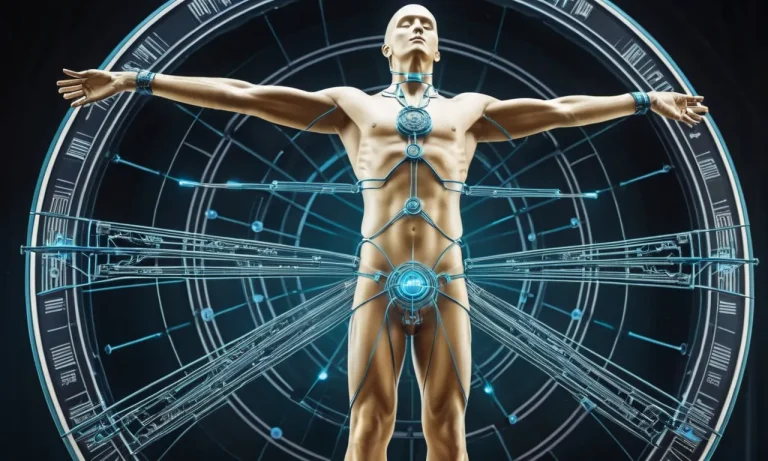Who Is The God Of Earthquakes?
Earthquakes have frightened humankind since the dawn of history. When the ground violently shakes beneath your feet, it’s only natural to wonder what powerful forces could cause such intense tremors. If you’ve asked yourself ‘Who is the god of earthquakes?’, you’ve come to the right place.
If you’re short on time, here’s a quick answer to your question: In Greek mythology, Poseidon was considered the god of earthquakes and the sea. Keep reading to learn more details about earthquake gods throughout mythological history.
Poseidon: The Greek God of Earthquakes
Poseidon’s Creation Story
According to Greek mythology, Poseidon was one of the first gods created by the Titan parents Cronus and Rhea. He was swallowed by Cronus at birth but later rescued by his brother Zeus. When Zeus led a revolt against the Titans and overthrew Cronus, Poseidon and his brothers drew lots to divide the realms.
Poseidon drew the sea and was appointed god of the oceans, earthquake, storms, and horses.
Poseidon’s Powers over the Earth and Sea
As the god of the sea, earthquakes, and horses, Poseidon had tremendous power. He controlled the oceans and caused earthquakes by striking the ground with his trident. His horses had power over the waves, allowing him to harness the strength of the sea.
Poseidon could conjure storms, floods, and violent waves to wreak havoc on both sailors and coastal cities. Temples and offerings aimed to appease his wrath. His ability to cause massive destruction is why he was associated with earthquakes in particular.
Temples and Worship of Poseidon
As an important and powerful Greek god, Poseidon had many temples and sanctuaries dedicated to worshipping him across ancient Greece. His most renowned temple was in Sounion, the southernmost tip of Attica. This temple overlooked the Aegean Sea, allowing sailors to view it from far offshore.
Other major temples could be found in Helike, Corinth, and Calauria.
Followers made offerings and animal sacrifices, particularly of bulls and horses, to appease Poseidon. Cities especially prone to earthquakes aimed to gain his favor to avoid destructive seismic events.
Even into modern times, Poseidon endures as a legendary Greek god and symbol of the sea’s timeless power.
Other Earthquake Gods in Mythology
Nereus: An Earlier Greek Earth-Shaker
Before Poseidon became the god associated with earthquakes in Greek mythology, there was an earlier sea god named Nereus who was thought to cause the shaking of the earth. As an ancient sea deity, Nereus was believed to have the power to cause tremors with his anger.
According to the ancient poet Hesiod, Nereus was known as the “Old Man of the Sea” and lived in the depths of the Mediterranean with his wife Doris.
Though Nereus faded as Poseidon rose to prominence as the god of the sea, earthquakes, and horses in Greek mythology, he offers an interesting look into how early Greeks conceptualized earthquakes before the worship of the Olympian gods became standardized.
Nereus represents a more elemental understanding of seismic events, in which the shaking of the earth was attributed to the anger of ancient and mysterious aquatic forces.
Japanese Earthquake Gods
In Japanese mythology, earthquakes were thought to be caused by a god named Nai-no-Kami, who is portrayed as a catfish. According to tradition, this powerful creature would thrash about and cause violent tremors when its moves were restricted.
This mythological explanation mirrors the Japanese folk belief that earthquakes were caused by a giant catfish named Namazu writhing free from Kashima, the god who restrained it. In artwork from the Edo period, Namazu is often depicted in this struggle with Kashima, leading to catastrophic quakes and tsunamis as the catfish thrashed in discontent.
Beyond Namazu, dragon gods known as Nanda Ryūō were also thought to incite earthquakes and other natural disasters when angered. Temples were built to appease these dragons and prevent wrathful tantrums that could shake and fracture the earth.
The Aztec God Tlaloc
For the Aztec civilization, earthquakes were attributed to their storm god Tlaloc. Axayacatl, the Aztec emperor who ruled from 1469 to 1481 in what is now modern Mexico City, is even said to have believed that an earthquake that struck his capital was a bad omen from Tlaloc, angered by the interruption of ritual sacrifices during an epidemic.
Tlaloc was greatly feared, as the Aztec people believed he could use storms, floods, and earthquakes to wreak havoc as punishment if he was displeased.
Rituals designed to appease him could involve gruesome human sacrifices, illustrating how vital earthquake deities were in ancient mythologies that linked such seismic events to divine wrath and discontent.
Modern Explanations for Earthquakes
Plate Tectonics and Seismic Activity
The theory of plate tectonics revolutionized our understanding of what causes earthquakes. According to this theory, the outer layer of Earth is made up of large, moving plates. When two plates meet each other, they can get stuck while the rest of the plates keep moving.
This causes a build up of energy that is eventually released in the form of earthquakes when the plates slip past each other.
The type of plate boundary determines the kind of earthquakes that occur. At transform boundaries, where plates slide past each other, shallow earthquakes predominate. At subduction zones, one tectonic plate sinks under another into the mantle, generating deep focus earthquakes that can exceed 700 km in depth!
Measuring Earthquake Strength and Frequency
We measure earthquake size or magnitude using the Richter scale and other seismic scales. Each increasing number represents a tenfold increase in the amplitude of the seismic wave generated by an earthquake. So a magnitude 7 quake produces waves 10 times bigger than a 6!
The largest quake ever recorded was the Great Chilean Earthquake of 1960 coming in at a staggeringly high 9.5.
In addition, seismologists monitor earthquake frequency and ground motion levels in earthquake-prone areas. Regions like the Pacific Ring of Fire see frequent tectonic activity and correspondingly large numbers of earthquakes annually.
However, the damage an earthquake causes depends on factors like depth, proximity to population centers, soil conditions, and building construction standards.
Predicting Dangerous Earthquakes
While seismologists cannot yet pinpoint exactly when and where an earthquake will happen, they are getting better at making probabilistic earthquake hazard assessments for a region. These may inform building codes, emergency planning, and public preparedness steps.
Promising forecasting approaches include studying foreshocks, changes in groundwater levels, crustal deformation from strain accumulation, and electromagnetic signals that appear before a rupture. Artificial intelligence is also being applied to massive seismic datasets to identify patterns predictive of a coming quake.
Ultimately, while we still cannot determine precisely when the seismic plates will unleash their pent-up fury, humanity’s expanding insights into earthquake mechanisms allows us to better prepare, design safer infrastructure, and save lives.
Conclusion
Although earthquake gods like Poseidon reflected ancient attempts to understand these destructive forces of nature, modern science provides natural explanations of seismic events. While less mystical, the geological origins of earthquakes help us take useful precautions and save lives.
However, the fearful awe these powerful tremors evoke is a timeless part of the human experience.








